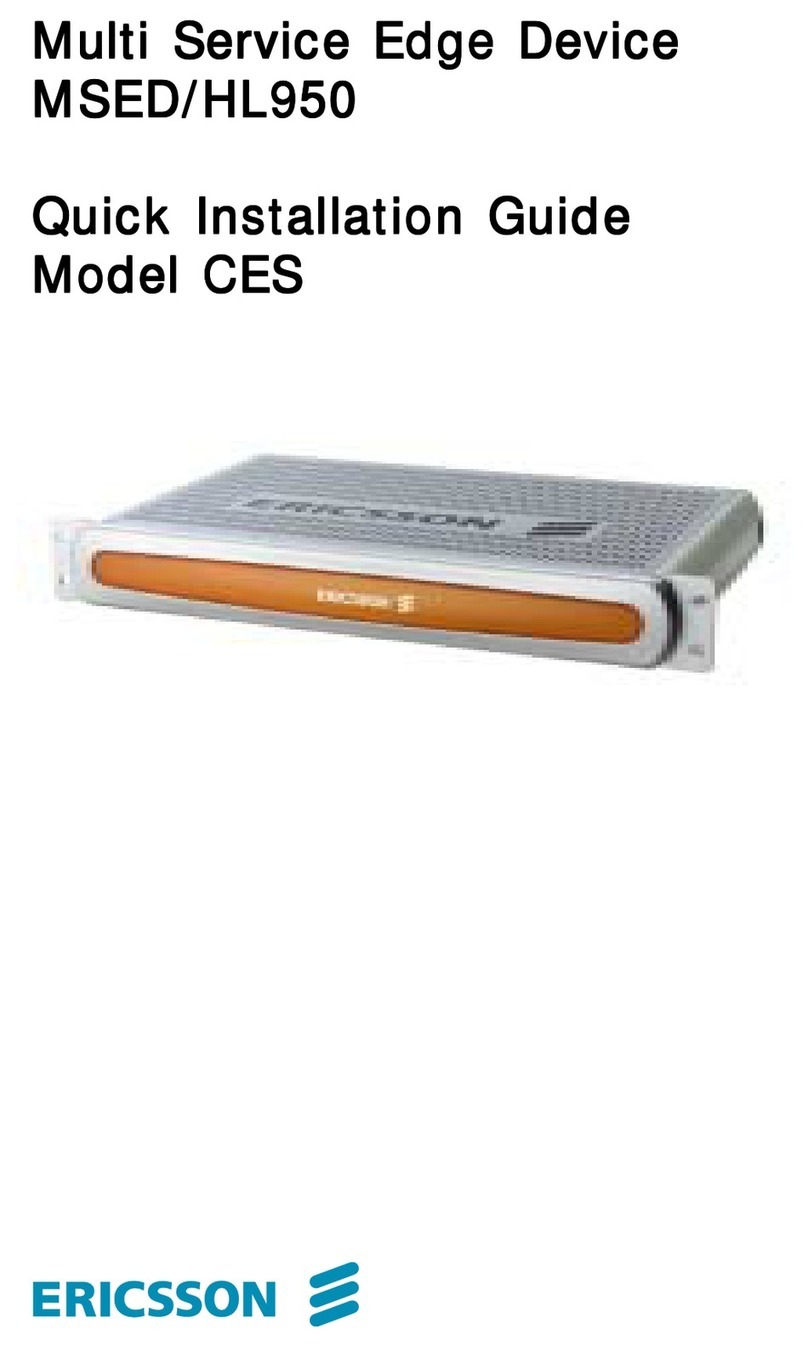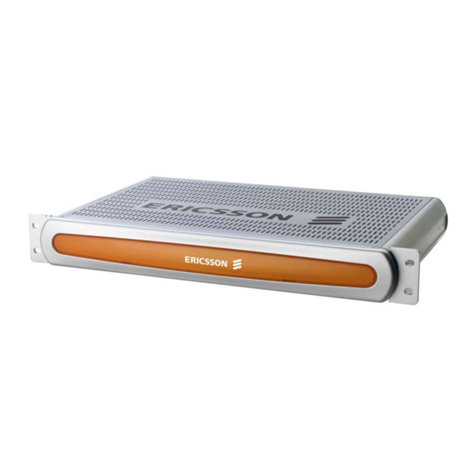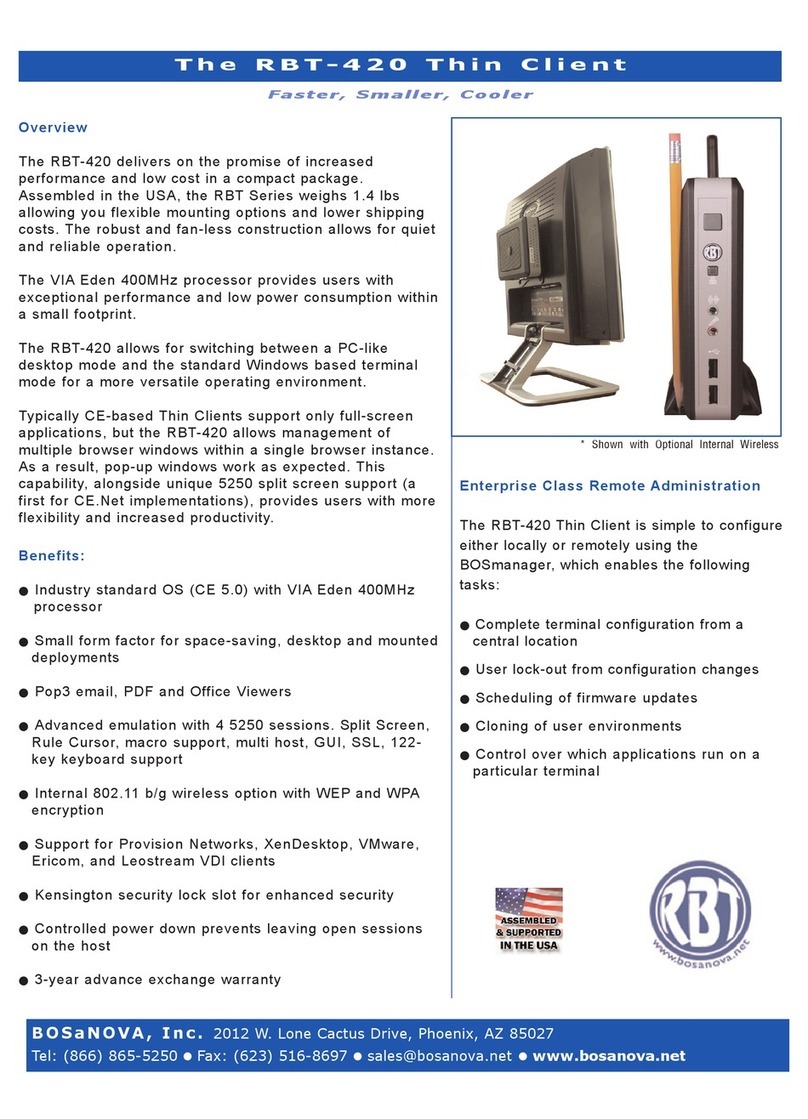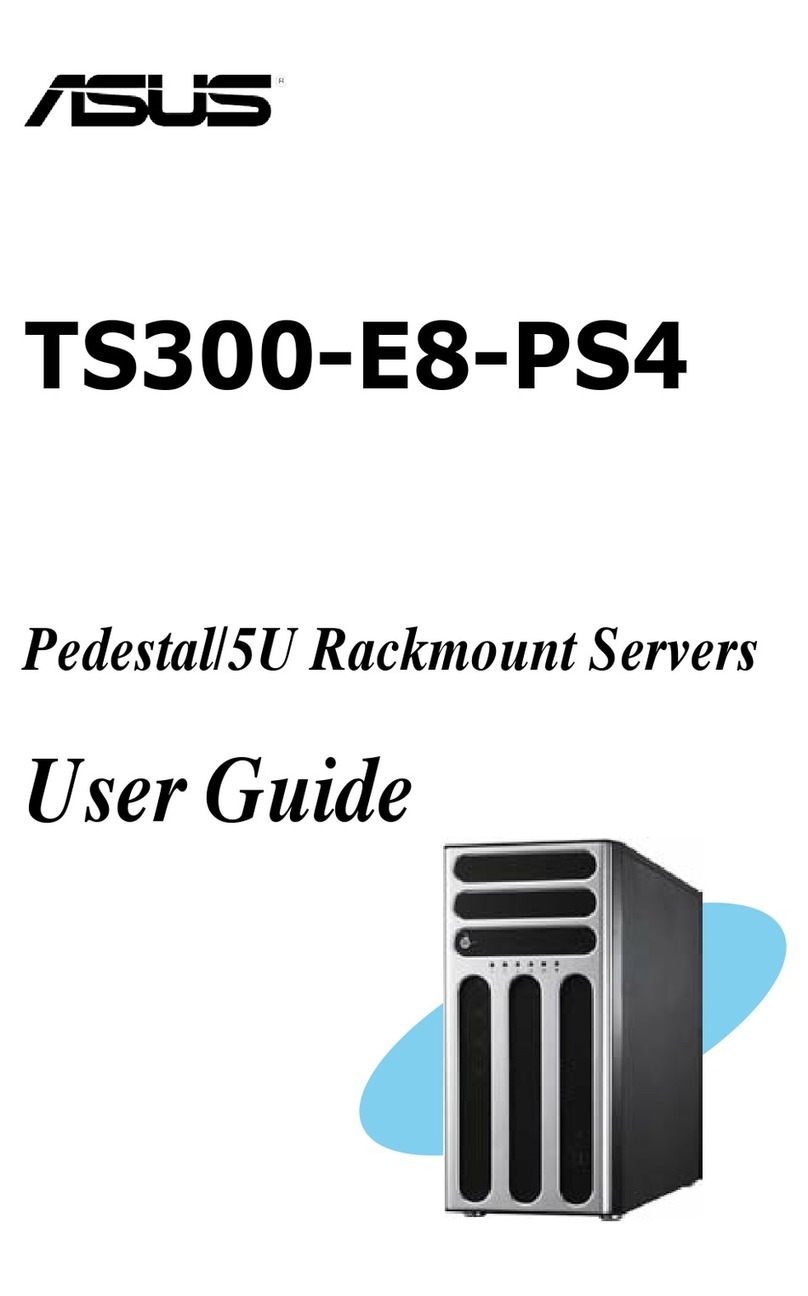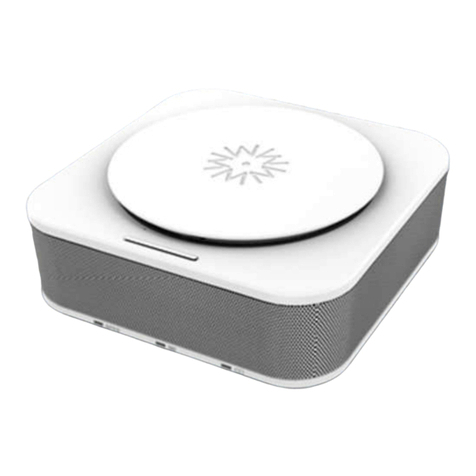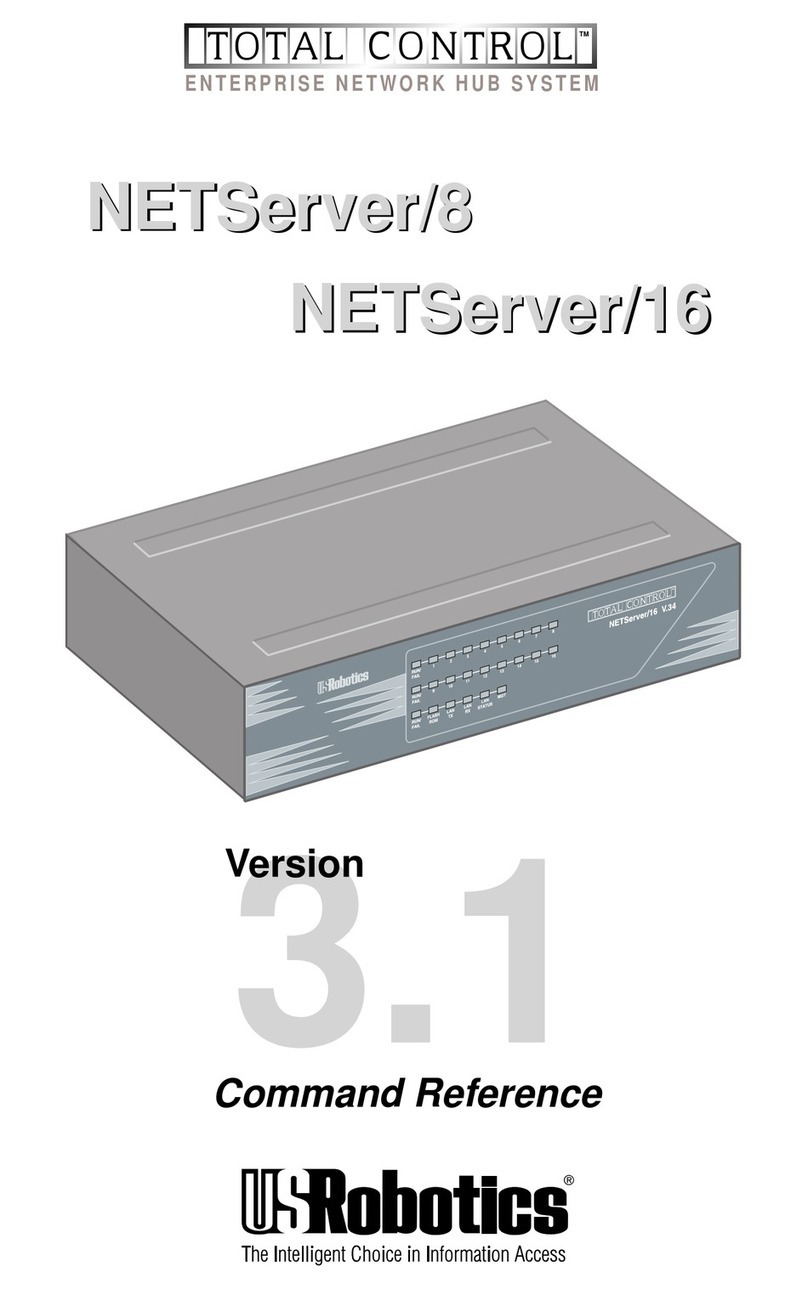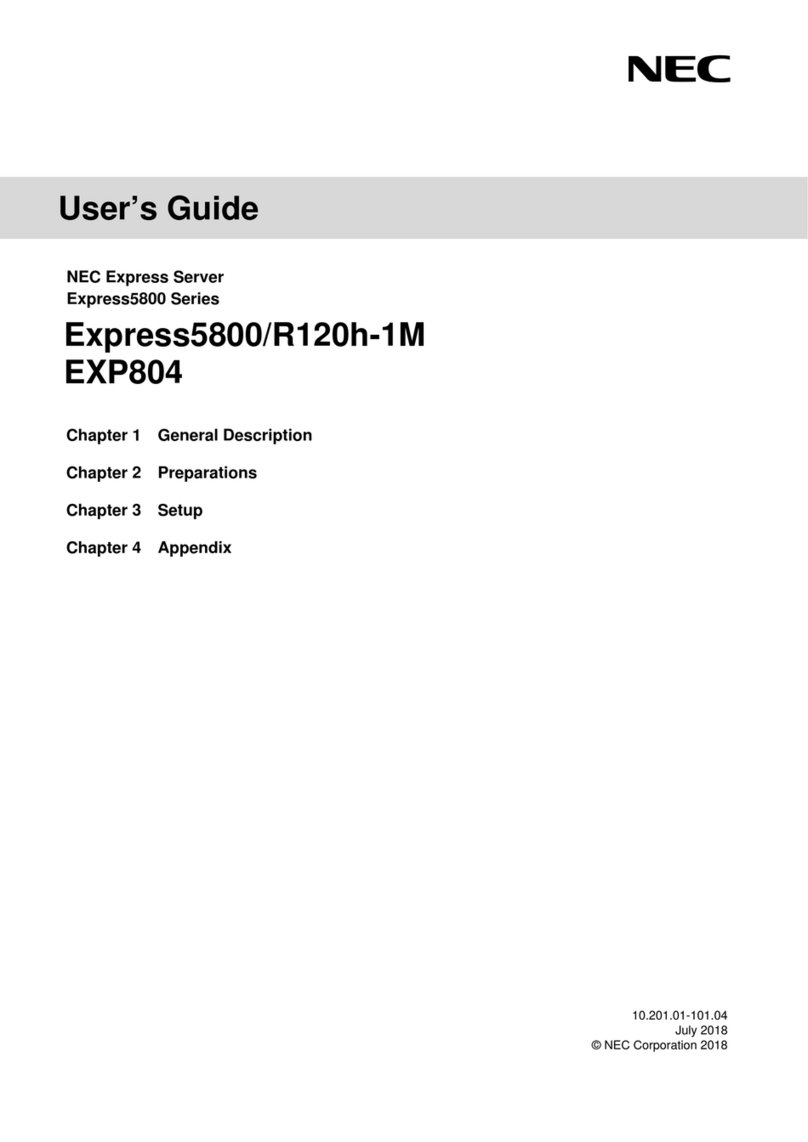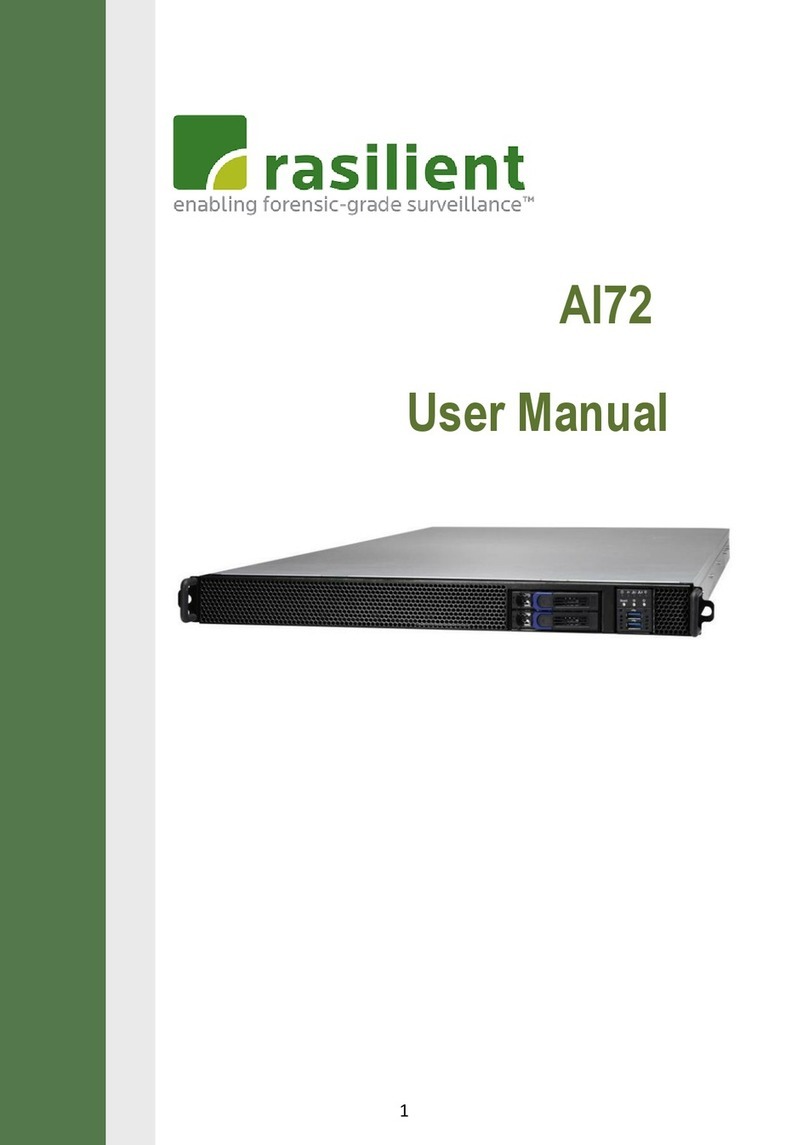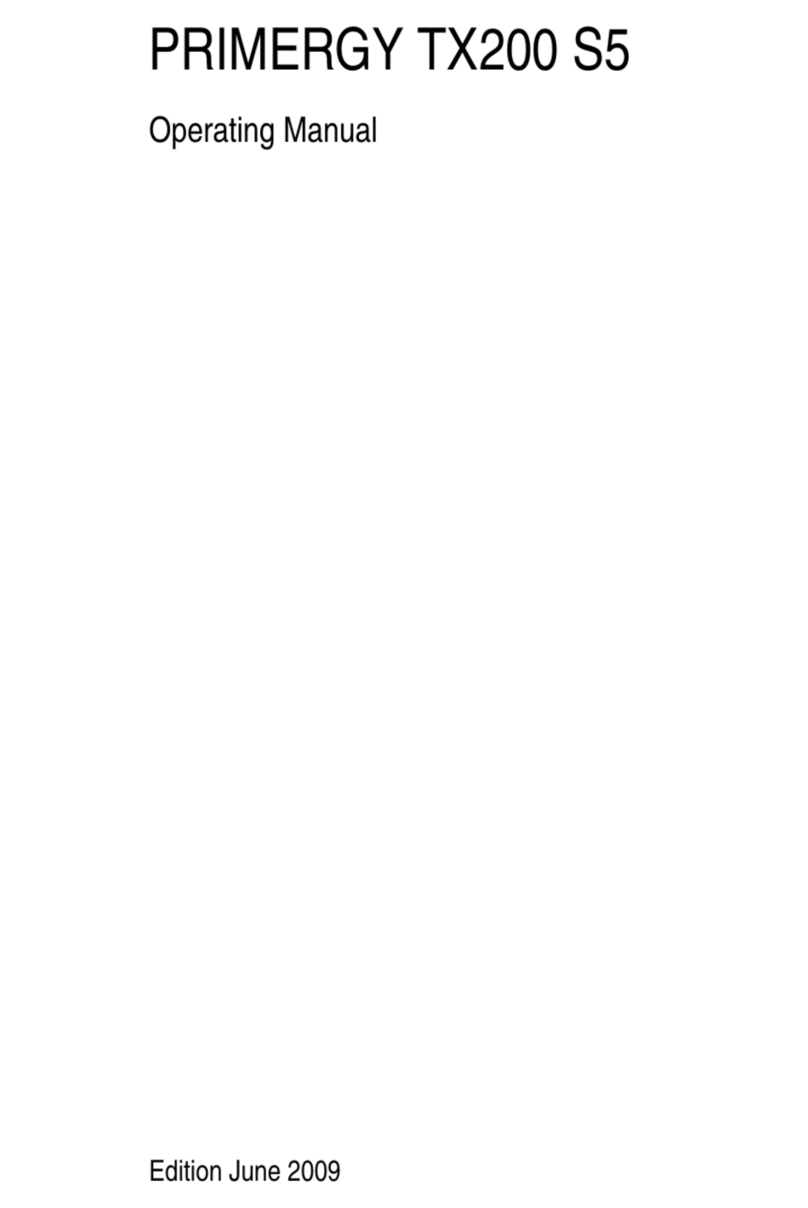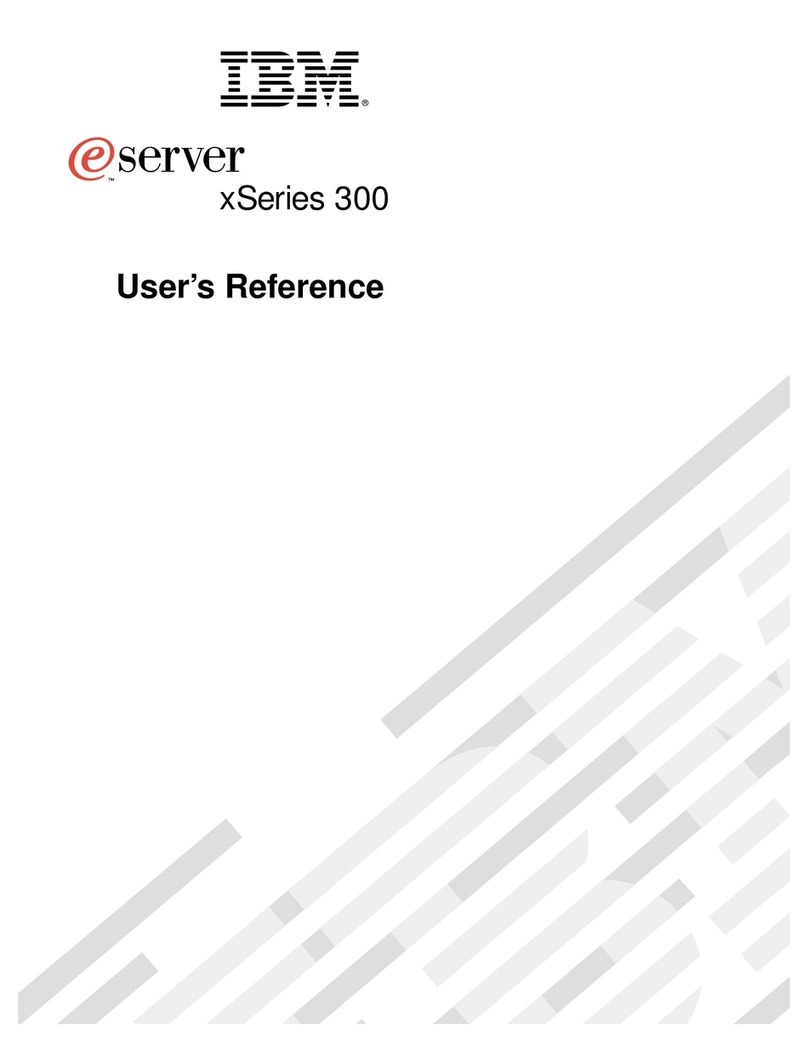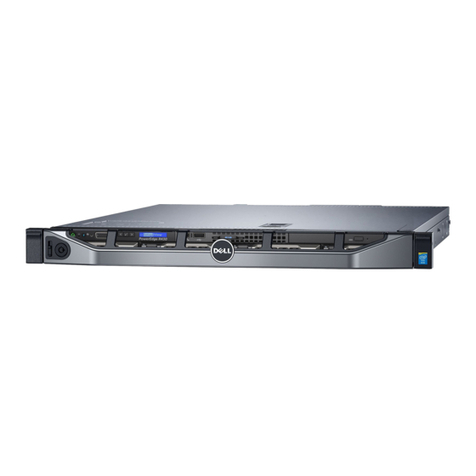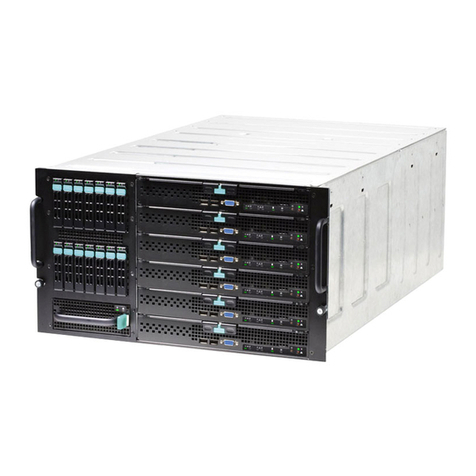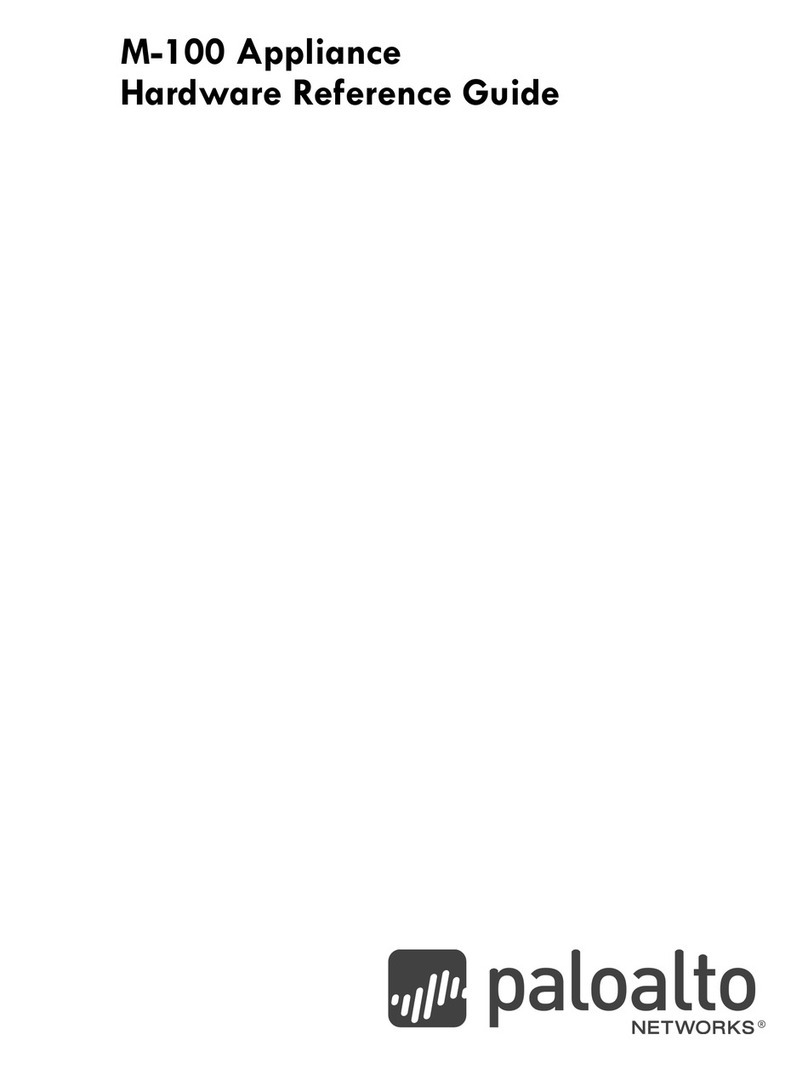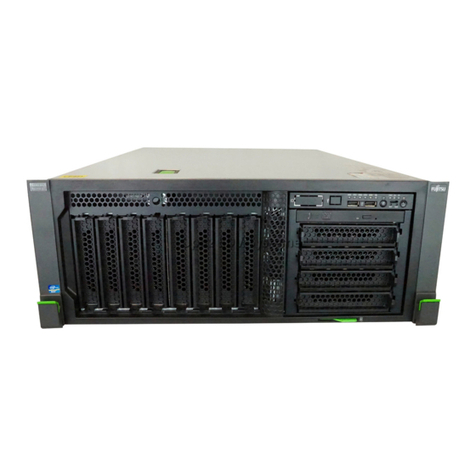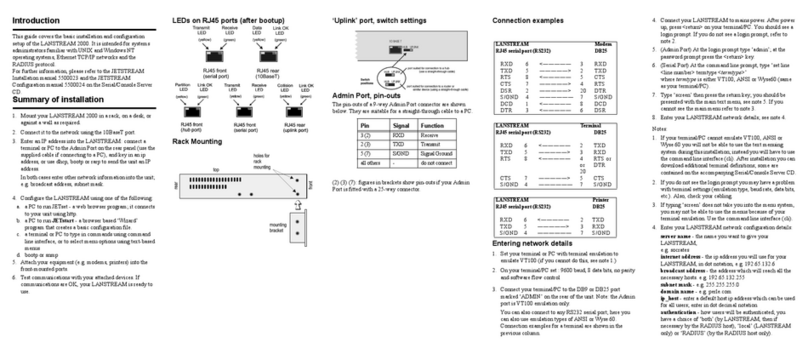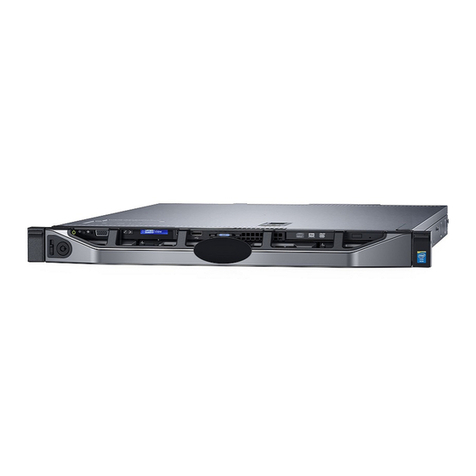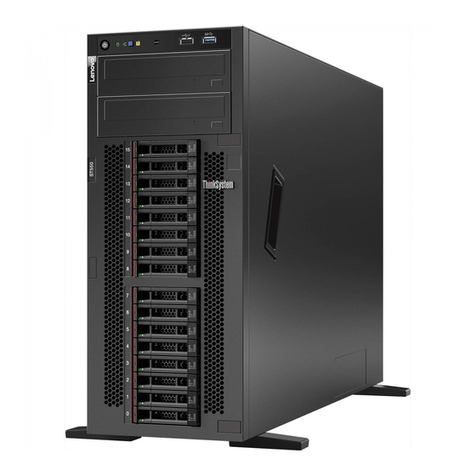Ericsson HL950 Service manual

Multi Service Edge Device HL950
Version 2.0
Administrator’s Guide

Multi Service Edge Device HL950
Administrator’s Guide
EN/LZT 108 5995 R3 Page 2 (159)
June 2003
Trademarks
Ericsson is the trademark or registered trademark of Telefonaktiebolaget LM Ericsson of Stockholm,
Sweden.
All other products or service names are the property of their respective owners.
Copyright
No part of this document may be reproduced in any form without the written permission of the
copyright owner.
The contents of this document are subject to revision without notice due to continued progress in
methodology, design and manufacturing. Ericsson shall have no liability for any error or damage of
any kind resulting from the use of this document.
© Ericsson AB 2003 – All Rights Reserved

Multi Service Edge Device HL950
Administrator’s Guide
Page 3 (159) EN/LZT 108 5995 R3
June 2003
Table of Contents
1INTRODUCTION ............................................................................................................11
1.1 About this Guide..................................................................................................................... 11
1.1.1 Typographic Conventions.................................................................................................... 12
1.2 Related Documents................................................................................................................. 12
2PRODUCT OVERVIEW .................................................................................................13
2.1 General .................................................................................................................................... 13
2.2 Services.................................................................................................................................... 14
2.3 Hardware ................................................................................................................................ 15
2.3.1 Baseboard (DTC-1000)........................................................................................................ 15
2.3.2 WIF Module......................................................................................................................... 16
2.3.3 LIF Modules......................................................................................................................... 16
2.3.4 TIF Modules......................................................................................................................... 16
2.3.5 Power Supply....................................................................................................................... 16
2.3.6 Part Numbers ....................................................................................................................... 17
3THE COMMAND LINE INTERFACE .............................................................................18
3.1 Access the Command Line Interface (CLI) ......................................................................... 18
3.1.1 Access the CLI via Console Port ......................................................................................... 18
3.1.2 Access the CLI via Ethernet Local LAN ............................................................................. 18
3.1.3 Access the CLI from a Network Management Center ......................................................... 19
3.1.4 User Accounts and Access Rights ....................................................................................... 19
3.2 Command Structure .............................................................................................................. 20
3.2.1 Main Commands.................................................................................................................. 20
3.2.2 Commands for Functions and Services................................................................................ 20
3.3 Command Conventions.......................................................................................................... 21
3.4 Command Navigation ............................................................................................................ 22
3.4.1 Getting Help......................................................................................................................... 22
3.4.2 Quick Command Keys......................................................................................................... 22
4CONFIGURATION .........................................................................................................23
4.1 Initial Configuration .............................................................................................................. 23
4.2 Configure CES........................................................................................................................ 25
4.2.1 CES over ATM ....................................................................................................................25
4.2.2 Typical CES over ATM Examples ...................................................................................... 26
4.2.3 Example Network Scenarios................................................................................................ 27
4.2.4 Calculating ATM Cell Rates................................................................................................ 37

Multi Service Edge Device HL950
Administrator’s Guide
EN/LZT 108 5995 R3 Page 4 (159)
June 2003
4.2.5 CES over IP ......................................................................................................................... 41
4.2.6 Typical CES over IP Examples............................................................................................ 41
4.2.7 Example Network Scenarios................................................................................................ 43
4.3 Configure Data ....................................................................................................................... 53
4.3.1 APPSTAT ............................................................................................................................ 53
4.3.2 ARP...................................................................................................................................... 53
4.3.3 BRIDGE............................................................................................................................... 54
4.3.4 DNS ..................................................................................................................................... 54
4.3.5 HOSTS................................................................................................................................. 54
4.3.6 NETSTAT............................................................................................................................ 54
4.3.7 PROTOCOL ........................................................................................................................55
4.3.8 ROUTE ................................................................................................................................ 56
4.4 Configure GOS ....................................................................................................................... 57
4.5 Configure Interfaces .............................................................................................................. 58
4.5.1 ATM VCC ........................................................................................................................... 58
4.5.2 Typical ATM VCC Example ............................................................................................... 58
4.5.3 DATA ETHERNET............................................................................................................. 59
4.5.4 DATA PHY ......................................................................................................................... 63
4.5.5 DATA WANAAL5.............................................................................................................. 63
4.5.6 Example Network Scenarios................................................................................................ 65
4.5.7 LINE SERIAL / X1 ............................................................................................................. 68
4.5.8 TELEPHONY FXS.............................................................................................................. 68
4.5.9 WAN SHDSL ...................................................................................................................... 69
4.5.10 Debug and Verification Tips ........................................................................................... 70
4.6 Configure Security ................................................................................................................. 71
4.6.1 Stateful Inspection Firewall ................................................................................................. 71
4.6.2 NAT with ALG support ....................................................................................................... 75
4.6.3 IPSec Management .............................................................................................................. 77
4.7 Configure Service ................................................................................................................... 84
4.7.1 Quality of Service Tagging.................................................................................................. 84
4.8 Configure System ................................................................................................................... 86
4.9 Configure Voice ...................................................................................................................... 87
4.10 Configure VGW...................................................................................................................... 89
5OPERATION AND MAINTENANCE..............................................................................90
5.1 Maintenance Checks ..............................................................................................................90
5.2 Verify New Modules............................................................................................................... 90
5.3 Back Up ................................................................................................................................... 90
5.4 Restore..................................................................................................................................... 91
5.5 Upgrade................................................................................................................................... 91

Multi Service Edge Device HL950
Administrator’s Guide
Page 5 (159) EN/LZT 108 5995 R3
June 2003
5.5.1 Upgrade System BOOTROM .............................................................................................. 92
5.5.2 Upgrade System JOGWARE............................................................................................... 92
5.5.3 Upgrade Examples ............................................................................................................... 92
6CLI COMMANDS ...........................................................................................................94
6.1 Main Commands .................................................................................................................... 94
6.1.1 CAT ..................................................................................................................................... 94
6.1.2 CD........................................................................................................................................ 94
6.1.3 CHKDSK ............................................................................................................................. 94
6.1.4 CLS ...................................................................................................................................... 95
6.1.5 CONFIG............................................................................................................................... 95
6.1.6 CP......................................................................................................................................... 95
6.1.7 EXIT .................................................................................................................................... 95
6.1.8 FLASHLED ......................................................................................................................... 95
6.1.9 FLUSH................................................................................................................................. 96
6.1.10 FORMAT ........................................................................................................................ 96
6.1.11 FTP .................................................................................................................................. 96
6.1.12 LINE ................................................................................................................................ 97
6.1.13 LOGOFF..........................................................................................................................97
6.1.14 LS .................................................................................................................................... 97
6.1.15 LSR.................................................................................................................................. 97
6.1.16 MKDIR............................................................................................................................ 98
6.1.17 MV................................................................................................................................... 98
6.1.18 PASSWORD ................................................................................................................... 98
6.1.19 PING................................................................................................................................ 98
6.1.20 PWD ................................................................................................................................ 99
6.1.21 QKEY .............................................................................................................................. 99
6.1.22 RELOAD......................................................................................................................... 99
6.1.23 RM................................................................................................................................. 100
6.1.24 RMDIR .......................................................................................................................... 100
6.1.25 SAVE............................................................................................................................. 100
6.1.26 TAR ............................................................................................................................... 101
6.1.27 TFTP.............................................................................................................................. 101
6.1.28 UPGRADE .................................................................................................................... 102
6.1.29 WHOAMI...................................................................................................................... 102
6.1.30 WHOISON .................................................................................................................... 103
6.1.31 XCP ............................................................................................................................... 103
6.1.32 XRM .............................................................................................................................. 103
6.2 CES Commands and Parameters ....................................................................................... 104
6.2.1 ATM................................................................................................................................... 104
6.2.2 IP........................................................................................................................................ 105
6.3 DATA Commands and Parameters.................................................................................... 106
6.3.1 APPSTAT .......................................................................................................................... 106
6.3.2 ARP.................................................................................................................................... 106
6.3.3 BRIDGE............................................................................................................................. 106
6.3.4 DNS ................................................................................................................................... 107
6.3.5 HOSTS............................................................................................................................... 107
6.3.6 NETSTAT.......................................................................................................................... 107
6.3.7 PROTOCOL ...................................................................................................................... 107
6.3.8 ROUTE .............................................................................................................................. 107

Multi Service Edge Device HL950
Administrator’s Guide
EN/LZT 108 5995 R3 Page 6 (159)
June 2003
6.4 GOS Commands and Parameters....................................................................................... 108
6.4.1 ALL.................................................................................................................................... 108
6.4.2 DAEMON.......................................................................................................................... 108
6.4.3 ENTRY .............................................................................................................................. 108
6.4.4 FILTER.............................................................................................................................. 108
6.4.5 LINK.................................................................................................................................. 109
6.4.6 QUALGP ........................................................................................................................... 109
6.4.7 STATS ............................................................................................................................... 109
6.5 INTERFACE Commands and Parameters........................................................................ 110
6.5.1 ATM VCC ......................................................................................................................... 110
6.5.2 DATA ETHERNET........................................................................................................... 110
6.5.3 DATA PHY ....................................................................................................................... 111
6.5.4 DATA WANAAL5............................................................................................................ 111
6.5.5 LINE SERIAL ................................................................................................................... 111
6.5.6 LINE X1 ............................................................................................................................ 112
6.5.7 TELEPHONY FXS............................................................................................................ 112
6.5.8 WAN SHDSL .................................................................................................................... 112
6.6 SECURITY Commands and Parameters........................................................................... 114
6.6.1 ACCESS ............................................................................................................................ 114
6.6.2 ALG ................................................................................................................................... 114
6.6.3 CERTIFICATE.................................................................................................................. 114
6.6.4 CONNECTION.................................................................................................................. 115
6.6.5 FIREWALL ....................................................................................................................... 115
6.6.6 IKE..................................................................................................................................... 116
6.6.7 IPSEC................................................................................................................................. 117
6.6.8 NAT ................................................................................................................................... 118
6.7 SERVICE Commands and Parameters ............................................................................. 119
6.7.1 DHCP................................................................................................................................. 119
6.7.2 NFS .................................................................................................................................... 119
6.7.3 QOS ................................................................................................................................... 120
6.7.4 RIP ..................................................................................................................................... 120
6.7.5 SNMP................................................................................................................................. 120
6.7.6 SNTP.................................................................................................................................. 121
6.7.7 SSH .................................................................................................................................... 122
6.7.8 TELNET ............................................................................................................................ 122
6.7.9 TFTP .................................................................................................................................. 122
6.8 SYSTEM Commands and Parameters............................................................................... 123
6.8.1 BOOTPARAM .................................................................................................................. 123
6.8.2 CALIBRATE ..................................................................................................................... 123
6.8.3 CFGCLI ............................................................................................................................. 123
6.8.4 CLOCK.............................................................................................................................. 123
6.8.5 CONSOLE ......................................................................................................................... 124
6.8.6 EXCEPTION ..................................................................................................................... 124
6.8.7 INFO .................................................................................................................................. 124
6.8.8 LOGGING ......................................................................................................................... 124
6.8.9 MODULES ........................................................................................................................ 125
6.8.10 SHELL........................................................................................................................... 125
6.9 VOICE Commands and Parameters .................................................................................. 126

Multi Service Edge Device HL950
Administrator’s Guide
Page 7 (159) EN/LZT 108 5995 R3
June 2003
6.9.1 MEDIA ATM..................................................................................................................... 126
6.9.2 PORT ATM ....................................................................................................................... 126
6.9.3 PORT FXS......................................................................................................................... 126
6.10 VGW Commands and Parameters ..................................................................................... 127
6.10.1 SERVICE ...................................................................................................................... 127
7PIN AND SIGNAL ASSIGNMENTS.............................................................................128
7.1 Console Interface.................................................................................................................. 128
7.2 Ethernet Interfaces............................................................................................................... 128
7.3 SHDSL Interfaces................................................................................................................. 129
7.3.1 SHDSL port 0 .................................................................................................................... 129
7.3.2 SHDSL port 1 .................................................................................................................... 130
7.4 E1 Interface........................................................................................................................... 130
7.4.1 Balanced E1 ....................................................................................................................... 130
7.4.2 Unbalanced E1................................................................................................................... 131
7.5 Serial Interfaces.................................................................................................................... 131
7.5.1 V.35.................................................................................................................................... 132
7.5.2 V.36.................................................................................................................................... 133
7.5.3 X.21.................................................................................................................................... 134
7.6 FXS and Life Line Interfaces .............................................................................................. 135
8TROUBLESHOOTING .................................................................................................136
8.1 Reset System Password........................................................................................................ 136
8.2 Troubleshooting Upgrades .................................................................................................. 136
9IMPORTANT INFORMATION......................................................................................137
9.1 Product Care and Maintenance .......................................................................................... 137
9.2 Freeware Licenses ................................................................................................................ 137
9.2.1 Java Runtime Environment, JRE v1.4.1 ............................................................................ 137
9.2.2 OpenSSH ........................................................................................................................... 137
9.2.3 OpenSSL............................................................................................................................ 140
9.3 License Agreement ............................................................................................................... 141
9.3.1 License ............................................................................................................................... 142
9.3.2 Term................................................................................................................................... 142
9.3.3 Limited Warranty............................................................................................................... 142
9.3.4 Intended Use ...................................................................................................................... 142
9.3.5 Limitation of Liability........................................................................................................ 143
9.3.6 Governing Law .................................................................................................................. 143
9.4 Regulatory Information....................................................................................................... 143

Multi Service Edge Device HL950
Administrator’s Guide
EN/LZT 108 5995 R3 Page 8 (159)
June 2003
9.4.1 EU Directives..................................................................................................................... 143
9.4.2 Safety Approval ................................................................................................................. 144
9.4.3 EMC Approval................................................................................................................... 144
9.4.4 Telecom Approval ............................................................................................................. 144
9.4.5 Caution............................................................................................................................... 145
9.4.6 Environmental Information................................................................................................ 145
9.4.7 Intended Use ...................................................................................................................... 145
10 GLOSSARY .............................................................................................................147

Multi Service Edge Device HL950
Administrator’s Guide
Page 9 (159) EN/LZT 108 5995 R3
June 2003
Table of Figures and Tables:
Figure 1 HL950 Providing IP Services and Circuit Emulation ............................................................ 13
Figure 2 HL950 Providing IP Services and Voice over ATM ............................................................. 13
Figure 3 HL950 Hardware Overview................................................................................................... 15
Figure 4 Methods for Access to the HL950 CLI ................................................................................. 18
Figure 5 Main Commands for the HL950 CLI..................................................................................... 20
Figure 6 System Setup for Initial Configuration .................................................................................. 24
Figure 7 View of Elements and Prefixes for the CES Command......................................................... 25
Figure 8 CES over ATM ...................................................................................................................... 25
Figure 9 E1 Unstructured CES with Synchronous Clocking................................................................ 27
Figure 10 E1 Unstructured CES with Adaptive Clocking.................................................................... 29
Figure 11 X.21, V.35 and V.36 Unstructured CES with Synchronous Clocking................................. 31
Figure 12 X.21, V.35 and V.36 Unstructured CES with Adaptive Clocking....................................... 33
Figure 13 E1 Structured CES with Synchronous Clocking.................................................................. 35
Figure 14 Unstructured Protocol Data Unit (PDU) Format.................................................................. 37
Figure 15 Structured Protocol Data Unit (PDU) Format...................................................................... 37
Figure 16 CES over IP.......................................................................................................................... 41
Figure 17 E1 Unstructured CES with Adaptive Clocking and Axerra Mode....................................... 43
Figure 18 E1 Unstructured CES with Synchronous Clocking and Axerra Mode ................................ 45
Figure 19 E1 Unstructured CES with Adaptive Clocking and RAD Mode ......................................... 47
Figure 20 E1 Unstructured CES with Synchronous Clocking and RAD Mode ................................... 49
Figure 21 E1 Structured CES with Adaptive Clocking and Axerra Mode........................................... 51
Figure 22 View of Element and Prefixes for the DATA Command .................................................... 53
Figure 23 View of Element and Prefixes for the GOS Command ....................................................... 57
Figure 24 View of Elements and Prefixes for the INTERFACE Command ........................................ 58
Figure 25 Integrated Routing................................................................................................................ 59
Figure 26 Multi-VLAN Support........................................................................................................... 60
Figure 27 Routed Protocols over ATM PVCs...................................................................................... 65
Figure 28 Bridged Protocols over ATM PVCs .................................................................................... 66
Figure 29 Bridged Encapsulation PVCs using LLC or VCMux .......................................................... 67
Figure 30 View of Elements and Prefixes for the SECURITY Command .......................................... 71
Figure 31 Stateful Inspection Firewall and NAT ................................................................................. 72
Figure 32 Example of One to One NAT............................................................................................... 75
Figure 33 Example of Many to One NAT............................................................................................ 76
Figure 34 Example of Many to Many NAT ......................................................................................... 76
Figure 35 Point-to-Point Virtual Private Network (IPSec) .................................................................. 78
Figure 36 Multiple Point Virtual Private Network (IPSec).................................................................. 78
Figure 37 Secure Private Network Access ........................................................................................... 79
Figure 38 View of Element and Prefixes for the SERVICE Command............................................... 84
Figure 39 View of Element and Prefixes for the SYSTEM Command................................................ 86
Figure 40 View of Elements and Prefixes for the VOICE Command.................................................. 87
Figure 41 Voice over ATM (BLES)..................................................................................................... 87
Figure 42 View of Elements and Prefixes for the VGW Command .................................................... 89
Figure 43 Back Panel of HL950......................................................................................................... 128
Figure 44 DB9 Connector .................................................................................................................. 128
Figure 45 RJ45 connector................................................................................................................... 128
Figure 46 Connectors/indicators on the Dual SHDSL Interface module ........................................... 129
Figure 47 Connectors/indicators on the E1 Interface module ............................................................ 130
Figure 48 Connector on the Legacy V.35/V.36/X.21 Interface Module ............................................ 131
Figure 49 M/34 Connector ................................................................................................................. 132
Figure 50 DB37 Connector ................................................................................................................ 133

Multi Service Edge Device HL950
Administrator’s Guide
EN/LZT 108 5995 R3 Page 10 (159)
June 2003
Figure 51 DB15 Connector ................................................................................................................ 134
Figure 52 Connectors on the Telephony FxS Interface Module......................................................... 135
Table 1 - User Accounts and Authority Classes for the HL950 CLI.................................................... 19
Table 2 - Pin and Signals for the Console Port................................................................................... 128
Table 3- Pin and Signals for the Ethernet Ports.................................................................................. 129
Table 4 – Pin and Signals for the SHDSL Port 0................................................................................ 129
Table 5 – Pin and Signals for the SHDSL Port 1................................................................................ 130
Table 6 – Pin and Signals for the E1/T1 Connector ........................................................................... 130
Table 7 – Pin and Signals for the E1 Transmit Connector ................................................................. 131
Table 8 – Pin and Signals for the E1 Receive Connector................................................................... 131
Table 9 – Pin and Signals for the M/34 (V.35) Connector ................................................................. 132
Table 10 – Pin and Signals for the DB37 (V.36) Connector .............................................................. 133
Table 11 – Pin and Signals for the DB15 (X.21) Connector .............................................................. 134
Table 12 – Pin and Signals for the FxS and Life Line Connectors..................................................... 135

Multi Service Edge Device HL950
Administrator’s Guide
Page 11 (159) EN/LZT 108 5995 R3
June 2003
1 Introduction
This Administrator’s Guide contains information that you will need to install, configure and manage
the Multi Service Edge Device HL950, version 2.0.
1.1 About this Guide
This Administrator’s Guide is intended primarily for system administrators tasked with
commissioning, operating, and maintaining the HL950. It is also designed to help HL950 non-
privileged users view system status and configuration information.
This guide is organized into the following chapters:
Chapter 1 – Introduction; Provides information about the structure of this guide, typographic
conventions, and related documents.
Chapter 2 – Product Overview; Provides a brief description of services and hardware included in the
HL950.
Chapter 3 – The Command Line Interface; Describes how to access and use the HL950 Command
Line Interface.
Chapter 4 – Configuration; Explains how to perform the initial configuration as well as how to make
additional configuration of each of the HL950 supported types of interfaces and services.
Chapter 5 – Operation and Maintenance; Describes maintenance and file transfers such as back up,
restore, upgrade etc.
Chapter 6 – CLI Commands; Provides a summary of all CLI commands with prefixes and
parameters.
Chapter 7 – Pin and Signal Assignments; Provides details of the pin and signal assignments on the
HL950 external interfaces.
Chapter 8 – Troubleshooting; Provides tips and solutions for resolving some of the problems that
might occur when using the HL950.
Chapter 9 – Important Information; Provides information about product care, license agreements
and regulatory information.
Chapter 10 – Glossary; Includes descriptions of both abbreviations and other terms used in this
guide.

Multi Service Edge Device HL950
Administrator’s Guide
EN/LZT 108 5995 R3 Page 12 (159)
June 2003
1.1.1 Typographic Conventions
This guide uses the following typographic conventions:
Convention Example
System printouts appear in Courier. Status Not Running
Commands given to the Command Line Interface appear
in Courier bold. show ces ip;
Brackets mean that this part should be replaced with
what is indicated within the brackets. <port number>
Alternatives in a command are separated by a line. <on | off>
Default values in commands are underlined. cesoip=<axerra | rad>
The following symbol is used for special information:
NOTE!
Provides special information.
1.2 Related Documents
! Product Description, Multi Service Edge Device HL950, Version 2.0.
Document Number: 2/1551-ZAT75963 RevB.
! Quick Installation Guide, Multi Service Edge Device HL950, Version 2.0.
Document Number: EN/LZT 108 5945 R3.
! MSED Configuration Server, Administrator’s Guide.
Document Number: EN/LZT 108 6503 R1.

Multi Service Edge Device HL950
Administrator’s Guide
Page 13 (159) EN/LZT 108 5995 R3
June 2003
2 Product Overview
This chapter provides a brief description of services and hardware available in the Multi Service Edge
Device (MSED) HL950.
2.1 General
Professional users increasingly rely on broadband communications and network services in their daily
business. Along with broadband access, Internet and intranet applications, virtually every enterprise is
interested in telecommuting, advanced voice services, and video conferencing.
The HL950 offers integrated data and voice services for small and medium sized enterprises. It
provides a complete set of services - ranging from basic access provisioning to advanced voice and
exchange functionality.
The HL950 version 2.0 allows leased line replacement through ATM or IP leased-line emulation over
integrated ATM or IP broadband access. In addition, it can link to existing or alternative external
broadband access via VLAN. A full set of high-end IP access routing features with elevated VPN
support, Firewall, QoS mechanisms, and advanced voice and switching services is included.
Figure 1
HL950 Providing IP Services and Circuit Emulation
Figure 2
HL950 Providing IP Services and Voice over ATM

Multi Service Edge Device HL950
Administrator’s Guide
EN/LZT 108 5995 R3 Page 14 (159)
June 2003
2.2 Services
The HL950 provides the following software services. All services are unlockable on-demand by
license key activation via any network management interface.
! Leased Line Replacement (CESoATM)
This resident application includes constant bit rate Circuit Emulation Service for
V.35/V.36/X.21 and E1 connections over an ATM-based access network.
! Leased Line Replacement (CESoIP)
This resident application includes constant bit rate Circuit Emulation Service for E1 circuits
over an IP-based access network connection.
! IP Networking, Routing and Management
The HL950 supports local host multi-user IP networking and IP traffic routing via the
tributary Ethernet port(s) over both an ATM and a twisted pair Ethernet access network
connection. The HL950 also provides a DHCP server and DHCP relay functions.
! Ethernet LAN Bridging and Switching
The HL950 offers Layer 2 transparent bridging and switching of local Ethernet LANs over
both an ATM and a twisted pair Ethernet access network connection. This service supports
Layer 2 VLANs.
! IP VPN
The HL950 supports creation of secure connections over shared or public IP networks using
the IPSec protocol.
! IP Firewall
The HL950 includes an ICSA certified Stateful Inspection Firewall with ALG’s for the most
common uses.
! IP QoS Package – Guarantee of Service (GoS)
Ericsson has in cooperation with U4EA Technologiesintegrated a specific package for
predictable IP QoS in the HL950. This package imposes prioritizing, policing and shaping
based on a two-dimensional algorithm referred to as Guarantee of Service(GoS).
! Voice over ATM
The Voice over ATM service is in accordance with the ATM Forum's Broadband Loop
Emulation Service.
Configuration of each of the services is described in chapter 4 “Configuration”.
Future versions of the HL950 will provide complete private exchange functionality, including
subscription-based PBX or Key System replacement and management, telecommuting, support for
internal VoIP integrated handsets, unified messaging, and operator workstation and call center
applications.

Multi Service Edge Device HL950
Administrator’s Guide
Page 15 (159) EN/LZT 108 5995 R3
June 2003
2.3 Hardware
The HL950 is a multi service CPE (edge) device, with a powerful baseboard and a flexible slot
structure for interface boards. The interface boards support network access, a variety of telephony
interfaces, as well as 2048 kbit/s or Nx64 kbit/s connection interface towards the user side for leased
line replacement services.
Figure 3
HL950 Hardware Overview
Dimensions: 445 mm (W) x 275 mm (D) x 54 mm (H). Freestanding or 19” rack placement.
2.3.1 Baseboard (DTC-1000)
The baseboard is based on a high performance MIPS32 4Km architecture network processor with
integrated hardware engines for packet processing, voice processing and on-chip accelerated
encryption/decryption.
The baseboard includes:
! Dual 10/100 Base-T Ethernet ports (IEEE802.3) for WAN access and for local networking.
The MAC addresses for the two Ethernet ports are printed on the HL950 unit label and on the
package for the complete deliverable.
! One Console port RS232 (DB9 DCE) for local management. Terminal emulation program
should be configured for 9600 baud, 8 data bits, 1 stop bit and no parity.

Multi Service Edge Device HL950
Administrator’s Guide
EN/LZT 108 5995 R3 Page 16 (159)
June 2003
2.3.2 WIF Module
2.3.2.1 SHDSL Module
This network interface module is designed according to ITU-T G.991.2 and provides a dual SHDSL
connection for up to 4.6 Mbps full duplex 2- or 4-wire twisted pair (RJ-45). 4-wire mode over a single
cable is supported in connector 0.
2.3.3 LIF Modules
The HL950 is delivered with either an E1 Interface Module or a V.35/V.36/X.21 Interface Module for
connection to local equipment. For all local interfaces, the HL950 will act as a DCE unit.
2.3.3.1 E1 Interface Module
This interface module is a single E1 connection according to ITU Rec. G.703 and provides both 75
ohm unbalanced (DIN 1.0/2.3) and 120 ohm balanced (RJ-45) modes.
NOTE!
The LIF E1 interface belongs to secondary circuit and can only be used for in-house
connections.
2.3.3.2 Serial Module
This user interface provides a single port for V.35/V.36/X.21 n x 64 Kbps synchronous services. It
includes a 60-pin universal serial connector, which through different cable adapters provide the
following interfaces:
! V.35 – 34-pin (Winchester female) connector ISO 2593
! V.36 – 37-pin (Sub-D female) connector ISO 4902
! X.21 – 15-pin (Sub-D female) connector ISO 4903.
2.3.4 TIF Modules
2.3.4.1 FxS Interface Module
The FxS interface module provides 8 POTS interfaces to which it is possible to connect analog
telephones (station sets). The station sets are connected via customer-owned telephone pairs within the
same facility that the HL950 equipment is located in. In case of power failure, the FxS interface
module is equipped with an automatic line switchover to an analog trunk (life line).
2.3.5 Power Supply
The HL950 operates in the 100-240 volt range (50-60 Hz) with a maximum operating power
consumption of 45 watt.
The HL950 may be connected to mains power via an Uninterruptible Power Supply (UPS) for higher
availability.

Multi Service Edge Device HL950
Administrator’s Guide
Page 17 (159) EN/LZT 108 5995 R3
June 2003
2.3.6 Part Numbers
The table below lists part numbers for the various versions and spare parts of the HL950:
Component Part Number
HL950, CES over ATM
Configuration: WAN SHDSL, LIF E1
Power cord: EU+UK
ZAT 759 63/A101
HL950, CES over ATM
Configuration: WAN SHDSL, LIF SC (X.21)
Power cord: EU+UK
X.21 Cable Adapter
ZAT 759 63/A2011
HL950, CES over ATM
Configuration: WAN SHDSL, LIF SC (V.35)
Power cord: EU+UK
V.35 Cable Adapter
ZAT 759 63/A2012
HL950, CES over IP
Configuration: WAN Ethernet, LIF E1
Power cord: EU+UK
ZAT 759 63/A301
MSED Baseboard DTC NTM 101 793/1
MSED WIF DUAL SHDSL Module NTM 101 794/1
MSED LIF E1 Module NTM 101 795/1
MSED LIF SC (V.35, V.36, X.21) Module NTM 101 796/1
MSED TIF 8FxS Module NTM 101 797/1
MSED Power Supply NTM 101 800/1
MSED X.21 Cable Adapter NTM 101 891/1
MSED V.35 Cable Adapter NTM 101 892/1
MSED V.36 Cable Adapter NTM 101 893/1

Multi Service Edge Device HL950
Administrator’s Guide
EN/LZT 108 5995 R3 Page 18 (159)
June 2003
3 The Command Line Interface
This chapter describes how to access and use the HL950 Command Line Interface.
3.1 Access the Command Line Interface (CLI)
You can access the CLI locally or remotely as shown in the figure below:
Figure 4
Methods for Access to the HL950 CLI
3.1.1 Access the CLI via Console Port
This is a basic method for commissioning a new HL950.
1. Connect a PC to the HL950 CONSOLE port by means of a standard RS-232 cable.
2. Restart the PC (if required by your operating system).
3. Open a terminal window or start at terminal session on the PC. For example, if you use the
Hyper Terminal emulator available under the Windows operating system, connect as follows:
! In the Connection Description dialog box, enter a name and select an icon for the
connection.
! In the Connect to dialog box, select COM1 (or COM2) depending on which serial port
you are using.
! In the COM1 (or COM2) Properties dialog box, enter the following port settings:
Baud rate: 9600, Data: 8 bit, Parity: none, Stop: 1 bit, Flow Control: none.
! The HL950 displays the command line. Enter the user name and password.
3.1.2 Access the CLI via Ethernet Local LAN
Use this method for in-service OAM. In this case, the HL950 Ethernet ports already have been
configured for LAN access so that the HL950 management system can be accessed from the IP
network using Telnet.
NOTE!
The HL950 Telnet Service must be running before you can connect via Telnet. If Telnet is not
running, you must connect to the HL950 using the CONSOLE port and use the start
service telnet command to start the service. (For security reasons the Telnet service is
disabled by default).

Multi Service Edge Device HL950
Administrator’s Guide
Page 19 (159) EN/LZT 108 5995 R3
June 2003
1. Connect the LAN to the Ethernet port on the HL950 that has been configured for LAN access.
2. For example, if you use the Telnet session available under Windows for LAN and remote
access, configure it as follows:
! In the Windows start menu select Run….
! In the Run dialog box enter telnet.
! Connect to the IP address for the HL950.
! The HL950 displays the command line. Enter the user name and password.
! If your Telnet application is GUI-based, you may be able to configure your Telnet
terminal preferences to allow VT-100 compatibility so you have scrolling and cursor
arrow navigation. If your Telnet application is CLI-based, you should have scrolling and
cursor arrow navigation. Access your Telnet application’s online help (usually by typing
‘help’ or pressing ‘?’), or refer to your Telnet client documentation for more information.
3.1.3 Access the CLI from a Network Management Center
In this case, the HL950 is configured as a remote terminal to enable its management system to be
accessed remotely for commissioning purposes:
1. Use Telnet to access the HL950 CLI from a Network Management workstation. For
information on using Telnet, see “Access the CLI from a Local LAN” above.
2. Use FTP, TFTP or SFTP upload and download files and for general OAM.
3.1.4 User Accounts and Access Rights
The HL950 CLI supports two different user accounts;
! ROOT – with factory default user name root, and default password snowbomb
! USER – with factory default user name user, and default password firebird
Each account corresponds to three authority classes with different access rights as described in the
table below.
Authority Class
User Account ADMIN USER EVERYONE
ROOT Full read/write/execute Full read/write/execute Full read/write/execute
USER - Read only Full read/write/execute
Table 1 - User Accounts and Authority Classes for the HL950 CLI
Each command in the CLI is assigned to one of the authority classes.
The ROOT account has full READ, WRITE, and EXECUTE access to all commands.
The USER account has READ ONLY access to commands with authority class set to USER and full
READ, WRITE, and EXECUTE access to commands with authority class set to EVERYONE.
NOTE!
It is recommended that the administrator change the default passwords to prevent
unauthorized access. For more information on default user names and passwords, see section
8.1 “Reset System Password”.

Multi Service Edge Device HL950
Administrator’s Guide
EN/LZT 108 5995 R3 Page 20 (159)
June 2003
3.2 Command Structure
The HL950 Command Line Interface allows HL950 administrators to set up, configure and manage
HL950 devices. It also allows HL950 non-privileged users to view the current status of the HL950 but
not to make changes to the system.
For a detailed description of all CLI commands, including authority, available prefixes and
parameters, see chapter 6 “CLI Commands”.
3.2.1 Main Commands
The Main Commands are primarily related to the HL950 operating system and are as follows:
Main commands:
CAT CD CHKDSK CLS CONFIG CP EXIT
FLASHLED FLUSH FORMAT FTP LINE LOGOFF LS
LSR MKDIR MV PASSWORD PING PWD QKEY
RELOAD RM RMDIR SAVE TAR TFTP UPGRADE
WHOAMI WHOISON XCP XRM
Figure 5
Main Commands for the HL950 CLI
3.2.2 Commands for Functions and Services
The commands for functions and services are divided into three parts; Prefixes, Subgroups and
Elements. The command convention is a combination of “prefix-subgroup-element” followed by a
number of parameters and their values.
3.2.2.1 Command Prefixes
There are eight command prefixes as follows:
! SET –sets configuration values.
! SHOW – displays configuration values.
! ADD – adds objects.
! DEL – deletes objects and their values.
! START – starts the object designated by the command’s subgroup-element modifiers. (Once
you start services and interfaces, they will start automatically upon system restart).
! STOP – halts the object designated by the command’s subgroup-element modifiers.
! HELP – displays available commands. When used alone, you see the help system for the
HL950. When you use HELP as a prefix to a command, you see the help for that command.
Other manuals for HL950
1
This manual suits for next models
4
Table of contents
Other Ericsson Server manuals
